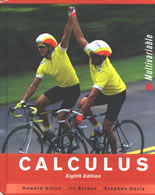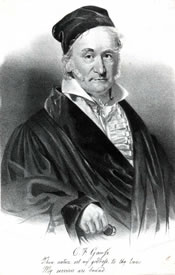Calculus III

Chapter 12
12.1
Three-Dimensional Space
Three-Dimensional space is merely an extension of two-dimensional space. Almost everything encountered in this book will be very familiar to anyone coming in from Calculus I and II. In fact, this class is the culmination of calculus, the foundation of further study.
A line (like the number line) has to directions; forward and backward, and is one-dimensional. A plane is two-dimensional, and has four directions; up, down, left, right, or two perpendicular lines intersecting at what is called the "origin". This is the familiar xy-coordinate system; up is positive on the y-axis and right is positive on the x-axis. Three dimensional space has six movements; the last two are movements vertically off of the two-dimensional plane.
The "right-hand rule" is the convention for which direction the z-axis points. It will also be referenced later when talking about torque and cross-products. This is the convention where by holding out your right hand with your thumb up and your fingers pointing forward, closing your fingers (assuming your fingers were initially pointed in the x-direction) into the y-direction, your thumb is now in the positive z-direction.
The last concept which is important for this section is that a variable which is not defined in an equation means that its value is left arbitrary. This means that it will extend indefinitely in both direction along that variables axis.
In the famous words spoken from the well and ill intentioned professors alike, it will be left to the student to establish a working knowledge of these topics on his or her own.
Hope this helps. Peace and good luck.
Note: Two vectors can be orthogonal, a vector is perpendicular to a plane, and two planes are said to be perpendicular.
12.2
Vectors
